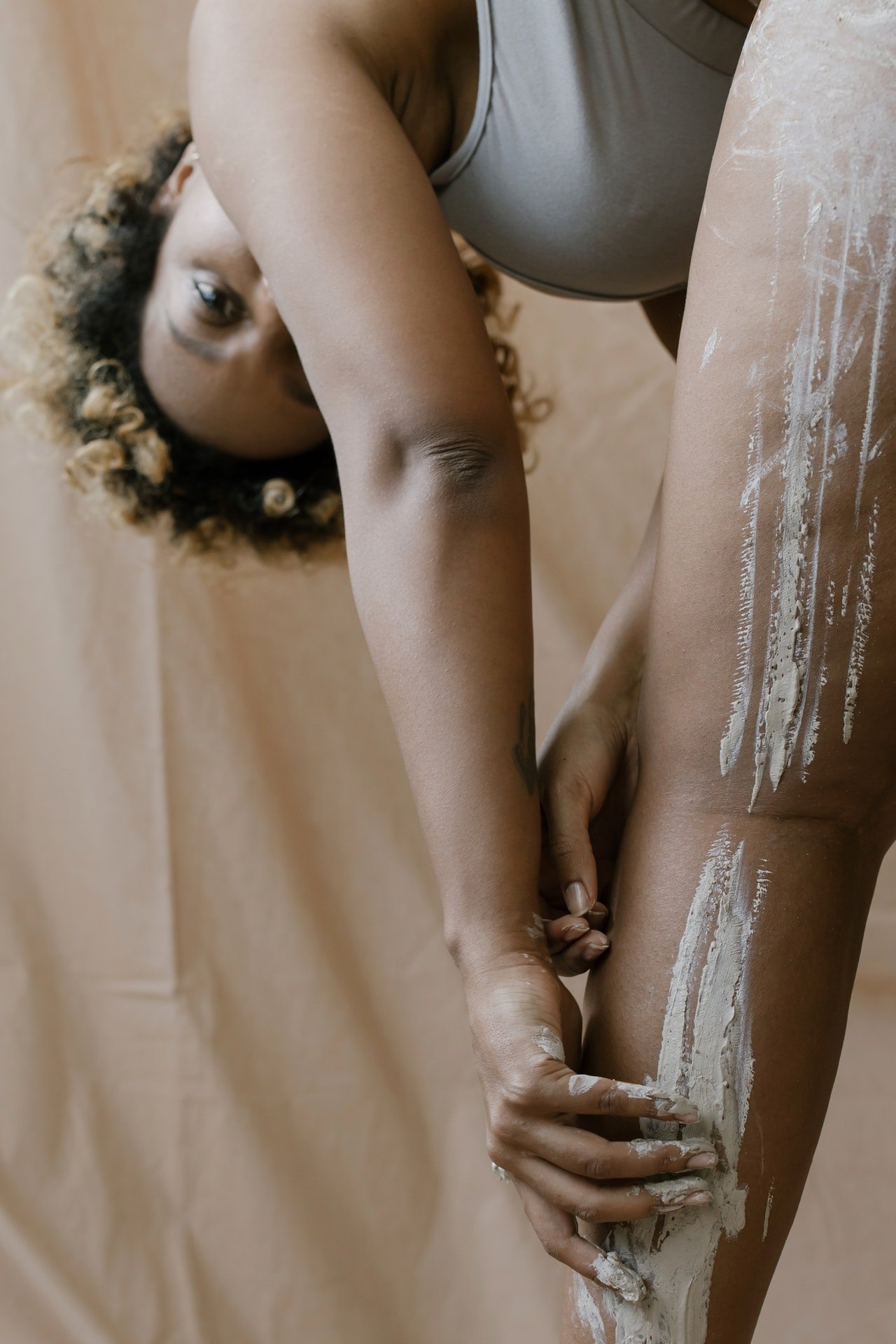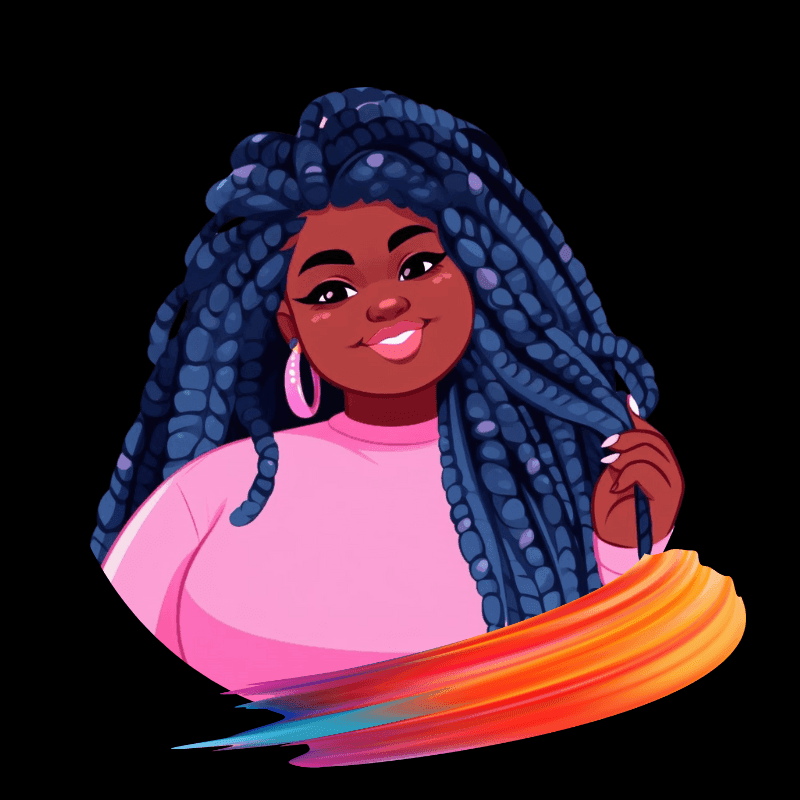In April 2022, HBO released the first-ever comprehensive large-scale investigation into skin care products called Not So Pretty. Spread into four parts covering makeup, hair, nails and skin, there was one common thread; the products that were getting a bad rap for how they affected people within the United States were now being sold and marketed to African women on the African continent.

Zoleka Mazibuko is a Zimbabwean woman who decided to go natural when she noticed she would often find sores on her head after using hair relaxers for too long. She, like many African women, grew up at a time when having straight hair wasn't just the norm, it was expected. After years of watching her hair grow weak and often falling out in clumps, she started to question whether relaxing her hair was the right path for her.
Is this the right path for any of us and is going natural enough?
The HBO Documentary series Not So Pretty, narrated by Keke Palmer, uncovered some of the dangers we face as women just by using products we find readily available in stores all around us. While Not So Pretty features people of all gender and race, this article seeks to talk about the effects posed for Black women specifically.
The docuseries follows the lives of different women like Mazibuko, who have gone through different stages of self-acceptance with their hair. In particular, it focuses on women of colour and the different ways they are significantly medically at risk when it comes to the different products they use in their daily lives.
A research project in 2012 by the American Journal of Epidemiology found that, “Hair relaxers can cause burns and lesions in the scalp, facilitating entry of hair relaxer constituents into the body.” The journal talked about how hair relaxers mostly used and marketed to Black women were found to have a connection with illnesses such as endometriosis and fibroids. This was attributed to hormonally active compounds called phathalates that American companies weren't required to list separately as ingredients and often instead listed them as “fragrances'' or “perfume.”
In 2015, The Guardian wrote an article reporting how researchers linked phathalates to asthma, attention-deficit hyperactivity disorder, breast cancer, obesity, type II diabetes, low IQ, neurodevelopmental issues, behavioural issues, autism spectrum disorders, altered reproductive development and male fertility issues.
Another study by Rutgers University in 2017, linked breast cancer to Black women’s use of hair relaxers. This was corroborated by the National Institutes of Health in 2020, after spending eight years studying over 46,000 women of all races between the ages of 35–74. They were looking for links between chemical hair relaxers and breast cancer. And, they discovered African American women’s breast cancer risk increased by 45%.
You might be thinking that this would cause the products to be recalled or banned, which would be perfectly rational to assume. As of 2022 however, these products are still being marketed and sold to African women on the African continent. As consumers have become wiser, and due to political and cultural movements within the United States, there has been a slow gradual decline in hair relaxer use. This hasn’t necessarily been the case in many African countries where Euro-centric ideals of beauty are still considered the norm and hair policing is still rampant in schools and workspaces.
Did the natural hair & curly hair movements result in less toxic products?
Different to the natural hair movement, the curly hair movement also included other women of colour but it comes with the same cautionary tale. Never trust a brand created just to make money from you.
The curly hair and the natural hair movements came as an uprising of women escaping the euro-centric standards of beauty that had captivated the world for decades. This era came with a new dawn of influencers showcasing and encouraging more women to keep their hair in its natural texture instead of aiming to strengthen it. The movements, known for their acceptance of women and embracing the historical context behind our hair, quickly became a trend. This resulted in what was meant to inspire instead being used to package and commodify Blackness.
In the documentary, we follow the lives of a range of hair influencers whose lives changed through their business partnerships with a brand called DevaCurl. DevaCurl is just one of the many businesses and brands that saw an opportunity within social media and offered not only free products as a free marketing tool, but also gave normal women the opportunity to become celebrities all by embracing their hair in its natural state. This did not come without consequences.
The women in the documentary all began to suffer from different medical issues ranging from hair loss, and ringing in their ears, to rashes and wounds on their skin. The side effects weren’t just isolated to their hair however, as one of the contributors, Ayesha, started dealing with hormonal imbalance, memory loss, delayed speech and has even been forced to wear hearing aids for the rest of her life. Many of these symptoms can be attributed to the brand using ingredients that release a chemical called formaldehyde. This is also one of the main ingredients found in hair relaxers.
Studies show that chemicals we put on our scalp show up in our blood, our breast milk and our urine. So it was no surprise when close to 60,000 women came forward sharing stories of their side effects from not just DevaCurl but hundreds of other brands and shampoos that are specifically marketed to women of colour and Black women.
The reality is, even to achieve the crowning example of what is considered good natural or curly hair, one has to use a lot of products and those products aren’t always that good for you. The cosmetics industry has fully taken advantage of Black women's need for specialised products.
Unlike Mazibuko who had an early start, Rejoice Rutendo Mahori not only faced hair loss and excessive dandruff from hair relaxers, but she also experienced thyroid issues and hormonal imbalances from dyes. This led her down a path of critically analysing all the products she was using, including her make-up, when she started to notice pustular wounds and frequent breakouts after using MAC products.
But, what’s wrong with makeup?
EWG in a recent article, titled: Big Market for Black Cosmetics, but Less-Hazardous Choices Limited shared, “In an analysis of ingredients in 1,177 beauty and personal care products marketed to Black women, about one in 12 was ranked highly hazardous on the scoring system of EWG's Skin Deep® Cosmetics Database.”
The makeup episode of Not So Pretty opens up with the story of Corrina. She shares how she was diagnosed with Mesothelioma; an incurable type of cancer caused by frequent exposure to asbestos. She was surprised to find that out as she had never worked or been in an environment where she was exposed to asbestos.
The cause of this exposure was found to be an ingredient that is commonly found in makeup; talc. Talc, also listed as talcum or talcum powder, can be found in foundation, blush, lipstick, condoms and even baby powders that have been marketed for decades to women across the world. The danger is that talc is typically extracted from mines that are near asbestos deposits.
One of the biggest proponents of this is Johnson and Johnson. After years of denial and doubling down, Johnson and Johnson finally decided in 2020 to reformulate its baby powder in the U.S., replacing the talc with safer cornstarch. As of 2022 however, the company continues to sell and market its talc-based products to Black mothers and children who are all being unwittingly exposed to asbestos. There are currently over 34,000 outstanding lawsuits linking Johnson and Johnson to cancer.
As I was watching this documentary I was quick to check my makeup products and I was terrified as I found the ingredient in question listed on my bronzer, eye shadow and setting powder. The Eastgate shopping mall in CBD Harare, where I purchased the products, was also riddled with products containing talc. This is a common occurrence across the continent as companies are still not required by law to make sure their products are safe. When they are caught, as is the case with Johnson and Johnson, they are quick to turn to more marginalised communities and countries where access to social media and the dangers of their products isn’t common knowledge.
When chatting to women about these dangers, many are quick to point out that knowledge is a burden when they can’t afford to buy the more expensive and hard-to-access organic products. It is also hard to keep up with which products are safe and which aren’t. This is a concern that adds fuel to the capitalist’s fire that is exploiting and in this case, actively giving Black women life-threatening diseases.

Is there anything we can do?
As African women, our hair, like our style, has been a huge source of debate. Whether we are getting our hair done for beauty, culture or as a political statement, brands are always lurking nearby looking to capitalise. This is what you can do to protect yourself.
1. Check the EU list for banned chemicals and see if the ingredients on your products match any of the chemicals on this list.
2. Use apps like Skin Deep, a free online resource for finding less-hazardous alternatives to personal care products, Detox Me, a healthy lifestyle guide that empowers you to eliminate toxic chemicals from your daily life with simple, research-based tips, Clearya, a Google Chrome extension and app that notifies you when there are unsafe ingredients while you are doing your online shopping.
3. Watch the documentary Not So Pretty to be informed about potential dangers that lurk in the products you may be using and visit the website for more resources.
4. Follow the advice of EU-based dermatologist and president of Society Of Cosmetic Scientists, Sam Farmer who urges consumers to:
- Watch out for fake cosmetic products. All EU products have rigorous cosmetic safety legislation in place and have been through Safety assessments, testing and scientific analysis.
- Look for products that state what skin type they are formulated for on the packaging.
- If you react to a cosmetic product (anyone can react to a chemical or group of chemicals) stop using the product.
- Be wary of companies that use ignorance and fear marketing (brands who use Toxic - Nasties - Chemical Free - Clean etc in their literature).
5. Like Mazibuko and Muhori, embark on a personal journey of uncovering the products you are using on your skin and contact a dermatologist to avoid any life-threatening risks.

